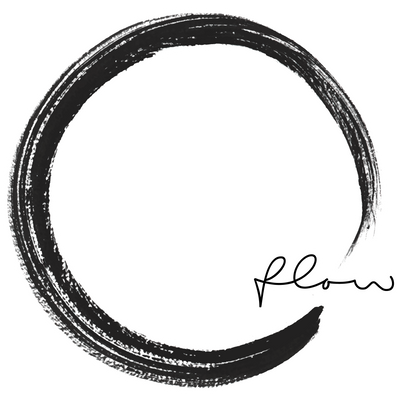
V.A.
Our Town: Jazz Fusion (Pink Vinyl)
- Our Town: Jazz Fusion, Funky Pop & Bossa Gayo Tracks from Dong-A Records
- Second edition of Korean AOR/City Pop compilation
- Newly illustrated artwork by Kwon Seo-young (tototatatu)
- 4-panel insert with extensive liner notes
- Pressed on hot pink vinyl
One word that might aptly describe Japan’s society and culture during the 1980s would be ‘bubble economy(バブル 景気)’, which is to say that it was characterized by abnormally inflated asset prices. Japan, which had emerged as a global economic powerhouse through rapid growth during the 70s, saw an era of unprecedented economic prosperity as it entered the 80s. As the Yen appreciated, the Japanese government opted to focus on stimulating domestic growth. Policies for driving domestic demand, such as low interest rates and relaxation of loan requirements, saw mass capital flows to the stock market and real estate. Japanese people experienced an unprecedented level of economic stability and leisure. The interest rate on savings accounts at banks hovered in the 8% range. Companies looking to hire new recruits paid hundreds of dollars to interviewees, and it was not uncommon for a salaryman in his 20s to make upwards of half a million dollars per year. It was a blissful time for everyone involved – businesses, the state, and the people. Or so it seemed. By the early 90s, this short-lived bubble suddenly collapsed as interest rates spiked and loans were put on hold.
Around this time, the very notion of city life, with its promise of prosperity amid economic stability, had a sense of allure to it. More and more people wanted to partake in a culture that was more sophisticated and refined. Likewise, a growing consumer base was purchasing automobiles and car audios. It was amid this atmosphere that new forms of music drawing on western soft rock, AOR, and adult contemporary, and incorporating elements of smooth jazz, contemporary R&B, and funk, rose to prominence. The urban-tinged music created by artists such as Hosono Haruomi(細野晴臣, formerly of Japanese rock pioneers Happy End(はっぴいえんど)), Tatsuro Yamashita(山下達郎), and Mariya Takeuchi(竹内まりや) came to be known as ‘city pop’. The city pop boom, which was buoyed on by the optimism pervading Japanese society during the 80s, faded away along with the collapse of the economic bubble. City pop still went on to influence the ‘Shibuya-kei’ style, which developed during the 90s around Tokyo’s Shibuya district, drawing from French pop, baroque pop, bossa nova, lounge, and house music.
The recent resurgence in the popularity of city pop, to the point where it appears to have carved out a central position in hipster culture, is a rather intriguing phenomenon. To begin with, the term ‘city pop’ itself was more of a marketing slogan, pointing to ‘music with urban sensibilities’ targeted toward consumers aspiring to urban life, rather than a descriptor of some particular music style or genre. Neither was the term widely used during the actual historical peak of the style’s popularity(that is, the 80s). On the contrary, it appears to have been rediscovered and redefined amid the ‘new-tro’ vogue of the late 2000s, driven by the nostalgia of those who grew up during the 80s. The important elements of ‘city pop’ have more to do with the sensational and affective descriptors associated with the term itself – such as sophistication, relaxedness, comfort, freshness, dynamism, elegance, radiance, sweetness, as well as the splendor and romanticism associated with the city. The underlying appeal of retro stems from the desire to experience and enjoy things from before one’s own time. This is not unconnected to the popularity of ‘cool kitschy’ subculture trends like vaporwave or future funk. So, there’s nothing surprising about today’s youths digging through well or lesser-known gayo records from the early/mid 90s featuring AOR, jazz fusion, or funky styles. Likewise, the artists that are mentioned under the keywords of ‘Korean City Pop’ – names like the Yoon Soo-il Band or the City Boys, Lee Jae-min, Bom Yeoreum Gaeul Kyeoul(Spring, Summer, Autumn, Winter), Kim Hyun-chul, Yoon Sang, Jang Pil-soon, Bitgwa Sogeum(Light & Salt), Yang Soo-kyung, Nami, Lee Eun-ha, and Hye-eunyi – are not unfamiliar.
TRACKLIST
1) BITGWA SOGEUM (LIGHT & SALT) 'The Fairy of Shampoo'
2) HAN SANG-WON 'Seoul, Soul, Soul'
3) YASHA ‘Snow-fighting Kids’
4) JEONG WON-YEONG 'Bygone Days'
5) KONA 'The End of Summer'
6) JANG PIL-SOON 'Before You Know It'
7) KIM HYUN-CHUL 'One Evening, On My Way Back from Hweng-gye'
8) SONG HONG-SUP 'When Tomorrow Comes'
9) LEE JUNG-SUN 'Dancing Child'
10) OH SEOK-JUN ‘Since You Left’

